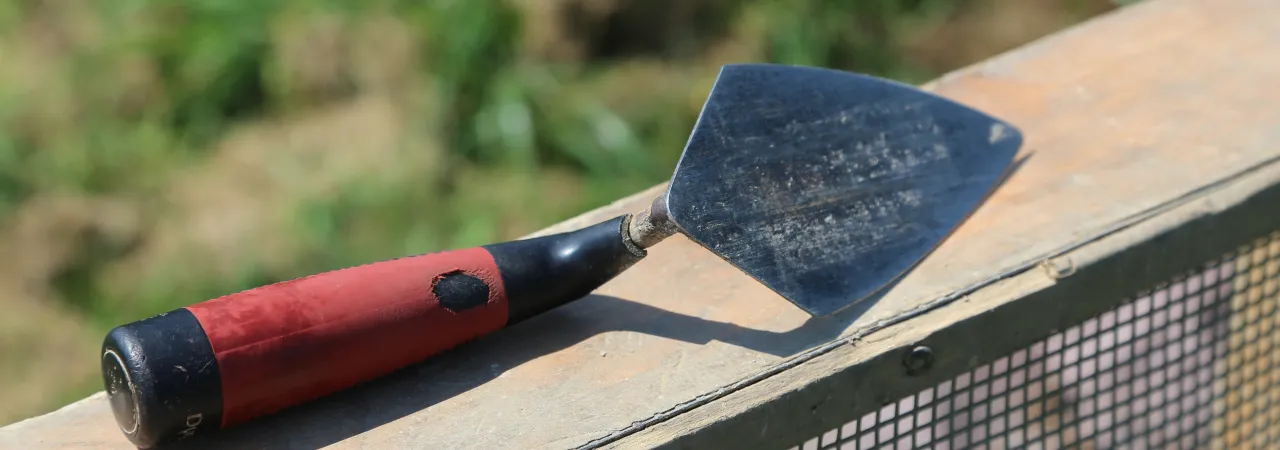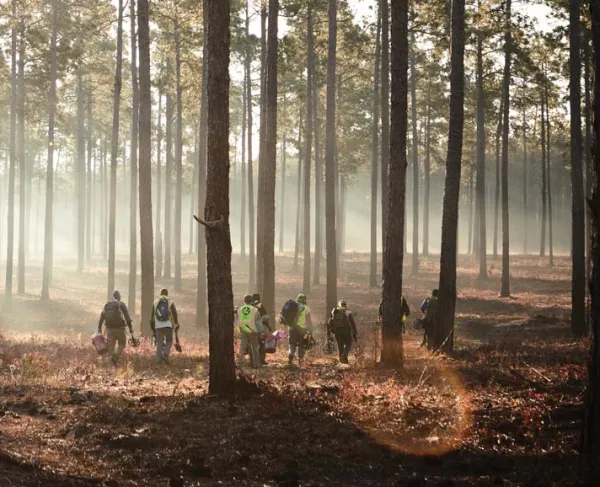
FAQ #1: What is battlefield archaeology?
Battlefield archaeology refers to the scientific study of a cultural landscape on which a military action – or battle – occurred. Archaeologists understand that by studying what was left behind after the battle occurred, historians, preservationists, and researchers can better understand how the battle unfolded. When studying the material culture, or artifacts, it is also critically important to study the topography, or the physical features of an area. Troops often used the landscape to their advantage, such as points of concealment and higher elevations. This just one reason why battlefield preservation is so important – without pristine landscapes, much of the knowledge we can gain through archaeological investigations could be lost forever.
FAQ #2: What kinds of artifacts are found on a battlefield?
Artifacts left behind from battles can range anywhere from a button to a cannon, or even mass burials containing human remains. Common artifacts left behind from a Revolutionary War battle includes bayonets, musket fragments, musket balls, grapeshot, cannons and cannonballs, belt buckles, buttons, camp supplies and burials. Together, these artifacts, and their placement on the landscape, can help piece together the stories of each of the soldiers that fought and oftentimes gave their lives on the battlefield.
FAQ #3: What methods are used in battlefield archaeology?
Archaeologists apply a variety of research methods to studying a battlefield. First, a considerable amount of background research is conducted through studying historical records and previous investigations, and consulting with regional experts. Archaeologists also survey the land through metal detecting, ground penetrating radar and light detection and ranging (LiDAR), and more. After a sense of what may lie beneath the surface is determined, archaeologists may open up a series of test pits, or small and methodologically placed excavations. Occasionally, if a large feature or artifact is expected, such as a building or artillery, a larger and more comprehensive excavation will take place. Finally, recording every step of the way is crucial to battlefield archaeology. Every artifact location is recorded with total stations and GPS devices. This information can be transferred easily into to a geographic information system (GIS), which helps to understand the placement of artifacts and their relationship to the natural and cultural landscape.
FAQ #4: Why do artifacts need to stay in their original location?
Location is the critical element of battlefield archaeology that enables us to expand our understanding of a battle. When the dig is complete and the map is compiled, the distribution of artifacts can show fields of fire, areas of engagement, and unit positions. Grouping of spent and deformed musket balls show where units came under heavy fire. Similarly, concentrations of dropped cartridges can show where the lines were located. Identifying canister, grapeshot, and solid shot, all help show what the artillery was targeting.
FAQ #5: What happens to artifacts once they are found?
Every site, and every archaeological project is different. In some cases, researchers want to simple study and understand a battlefield, so they will examine the artifact and then place it back in the ground where it was found after marking its location. Other times, the artifacts will be removed and put on display in a museum or housed temporarily in a university or other collection facility. Archaeological collections can be a treasure trove for information for years to come, as technologies and methodologies improve!
FAQ #6: How much does it cost to conduct an archaeological investigation on a battlefield?
Cost all depends on the level of intensity, duration, and methods used to conduct an archaeological excavation. Relatively straightforward research can range anywhere from $5,000 to $30,000, while more intensive or multi-year excavations or high-tech equipment can reach as high as $150,000 or more.
FAQ #7: What are the laws that protect artifacts on battlefields from looting and vandalism?
Archaeological resources are nonrenewable. Once a battlefield is developed or artifacts removed from their original location, much of archaeological record is lost as well. For this reason, archaeological resources, both sites and collections, are protected by law on federal and state lands. While federal law is applied consistently across the United States, state and local law differs from place to place. A few of the major laws enacted to protect archaeological resources include The Antiquities Act of 1906, the Historic Sites Act of 1935, the National Historic Preservation Act (NHPA) of 1966 and the Archaeological Resources Protection Act (ARPA) of 1979.
FAQ #8: Why is the Revolutionary War Trust getting involved in battlefield archaeology?
Battlefield archaeology is important for any conflict, but even more so for the Revolutionary War. Unlike the Civil War, Revolutionary War documents such as reports, records, and letters, are very scarce. Because of this our understanding of Revolutionary War battles is often imprecise. Battlefield archaeology is essential to improving our understanding of the Revolutionary War. Where historians see only inexact written references to embattled landscapes, archaeologists see treasure troves of new historical information waiting to be discovered. Battlefields are covered in martial debris--buttons, cartridges, bayonets, shrapnel, and more. Even though they are buried underground, they have a story to tell--one that has never been told before.
FAQ #9: What archaeological research has already been completed on Revolutionary War battlefields?
Although much research still needs to be completed on many battlefields, there have been amazing archaeological studies already completed. Campaign 1776 (now known as the Revolutionary War Trust, a division of the American Battlefield Trust) partnered with the Society of the Cincinnati and the National Park Service at Minute Man National Historical Park to protect and study the historic Parker’s Revenge battlefield site! An archaeological survey uncovered the location of Captain John Parker’s militia when they opened fire against the British during the 1775 Battles of Lexington and Concord. Other archaeological surveys have been completed at places such as Saratoga and Bennington in New York, Monmouth and Princeton in New Jersey, Hanging Rock and Charleston in South Carolina, and beyond!
FAQ #10: What is the Rediscovering the Revolution Battlefield Archaeology Program?
The Rediscovering the Revolution Battlefield Archaeology Program, created by the American Revolution Institute of the Society of the Cincinnati and Campaign 1776 (now known as the Revolutionary War Trust), serves to facilitate important research into the often-undocumented fighting that occurred during the course of the Revolutionary War. This private-sector grant program will provide funding for survey work, excavation, analysis and/or interpretation of battlefields from the Revolutionary War.





